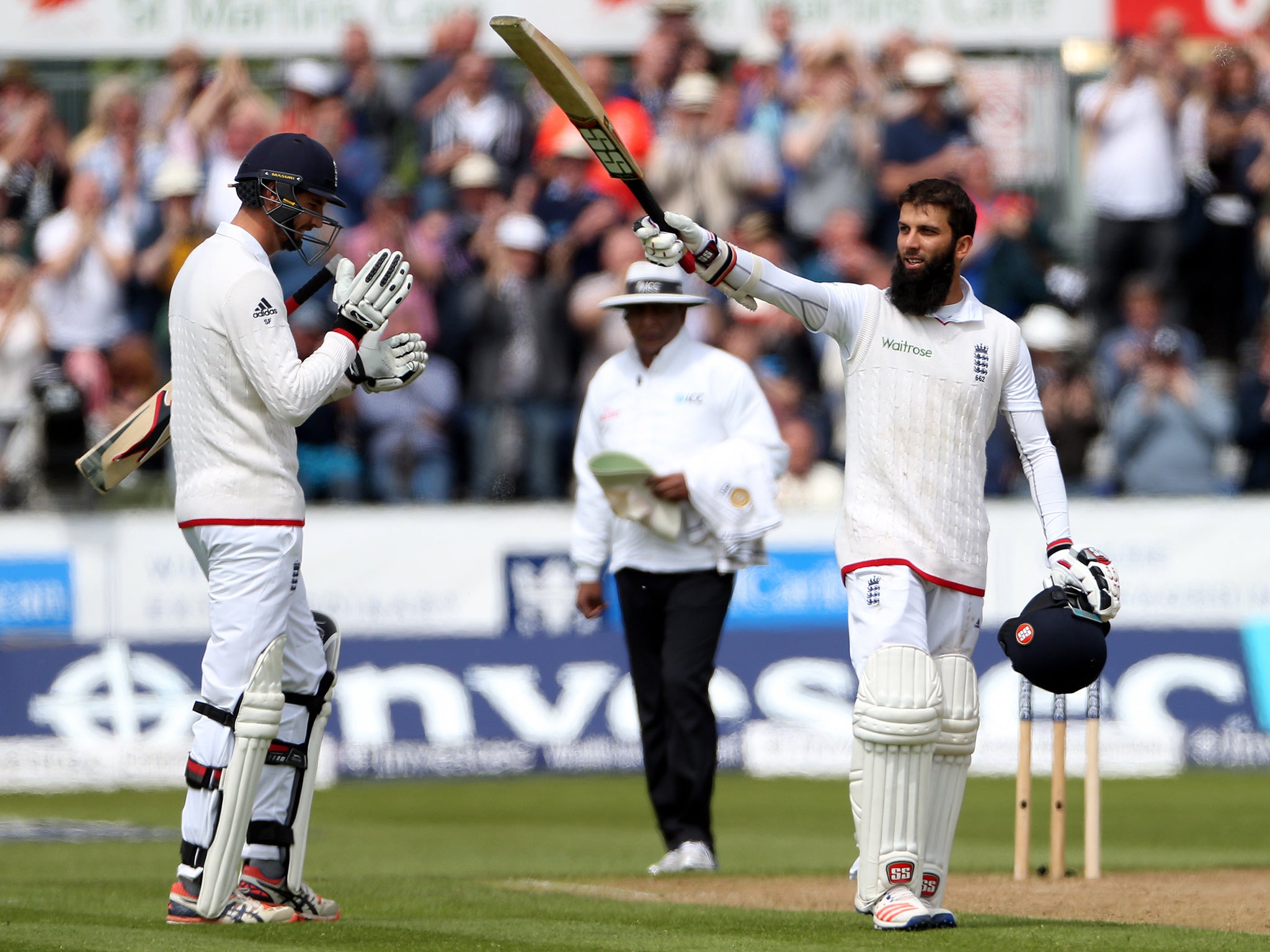England vs Sri Lanka: Will Moeen Ali finally be able to settle at No 7?
His unbeaten 155 at Chester-le-Street should have cemented him in the middle order

“I am not a number I am a free man” declared Patrick McGoohan in ‘The Prisoner,’ whereas to everyone else he was simply No 6.
But do numbers really matter? Moeen Ali was No 7 for England at Durham, up one from his No 8 position in the previous Test and the four before that. Such a small difference may seem irrelevant but it had a big effect, freeing-up Moeen enough for him to make his second Test hundred.
You would think a short move up the order like that would have nil effect on a batsman’s psychology. But Mo has been up and down England’s batting order, occupying Nos 1, 2, 6, 7, 8 and 9, since his Test debut in 2014.
That is more positions than advocates of the Kama Sutra manage, though the only one of note for Mo, and where he has made his two hundreds from so far, is No 7.
So what goes through a batsman’s head when their captain messes with the numbers? In my experience it can be anything from mild irritation to an all out strop. One line I’ve yet to hear when batsmen are asked to shift from their usual position is: “It will be a pleasure Skipper.”
Yet numbers appear to be powerful signifiers in batting orders. When Moeen was opening with Alastair Cook, as he did last winter against Pakistan in the United Arab Emirates, he would have approached the role as a batsman with all the self-denial that entails against the new ball. Even knowing he was in the side as much for his off-spin as anything else, would not have altered the added obligations he felt at the top of the order.
That role just wasn’t him. But just as that promotion to the top hoisted too much responsibility on him, his relocation to No 8, and occasionally lower, made him assume the mentality of a tail lender, and he batted accordingly.
Paul Farbrace, England’s assistant coach, even admitted as much recently, though he was quick to add that while Moeen might have occasionally been guilty of behaving like a lower-order lout, he was in fact a quality batsman.
It can be a very fine line for the brain to judge but the shift to seven offers just enough encouragement that he is valued as a batsmen but not too much that he is shorn of playing his shots. Also, the match situation here (he came in at 227 for five) left him with something to achieve, a duty he accomplished in fine style with a career best unbeaten 155.
He required some good fortune as Sri Lanka’s catching, so brilliant on the opening day, went lame on day two. With that languid swing of the bat, and a desire to let as few balls pass unmolested as possible, Moeen is always going to give the opposition a chance and he was dropped twice, on 36 and 105.
Nevertheless, as one of just five England players to make 150 or more at No 7, you’d have thought that box was ticked, but no. There are some, Michael Vaughan among them, who feel that England are best served by having Jonny Bairstow at No 7, a position low enough to allow him to recover from keeping wicket but also one from which he can launch his thrilling counter-attacks.
Personally I’d have Bairstow at five, as a specialist batsman, Ben Stokes six, when he’s fit again, then Moeen at seven and Jos Buttler, reinstated behind the stumps, at number eight. Apart from being a quartet for any opposition to conjure with, the entertainment would be splendid.
Bairstow would have to overcome the added pressure of not having a second string (his keeping) to fall back upon, but if you have aspirations to succeed at the highest level, you cannot always hope to do so from your comfort zone.
Some players prosper from dramatic shifts in their batting position. Bob Woolmer began his career as a seam bowler who batted at eight or nine and ended up opening the batting for Kent and country.
If more consideration goes into mapping a batting order these days, self interest was often the abiding consideration in county cricket of yesteryear, as Dudley Owen-Thomas, a talented batsman who played for Cambridge and Surrey in the early 1970s discovered.
With a well-defined pecking order back then, determined by senior pros, the story goes that Owen-Thomas would be asked to go in at three if the pitch was spicy but six or seven if it looked flat. Unsurprisingly, such treatment wasn’t conducive to a sparkling career and Owen-Thomas subsequently turned to the law for a living, something Moeen will never have to do.
Subscribe to Independent Premium to bookmark this article
Want to bookmark your favourite articles and stories to read or reference later? Start your Independent Premium subscription today.

Join our commenting forum
Join thought-provoking conversations, follow other Independent readers and see their replies